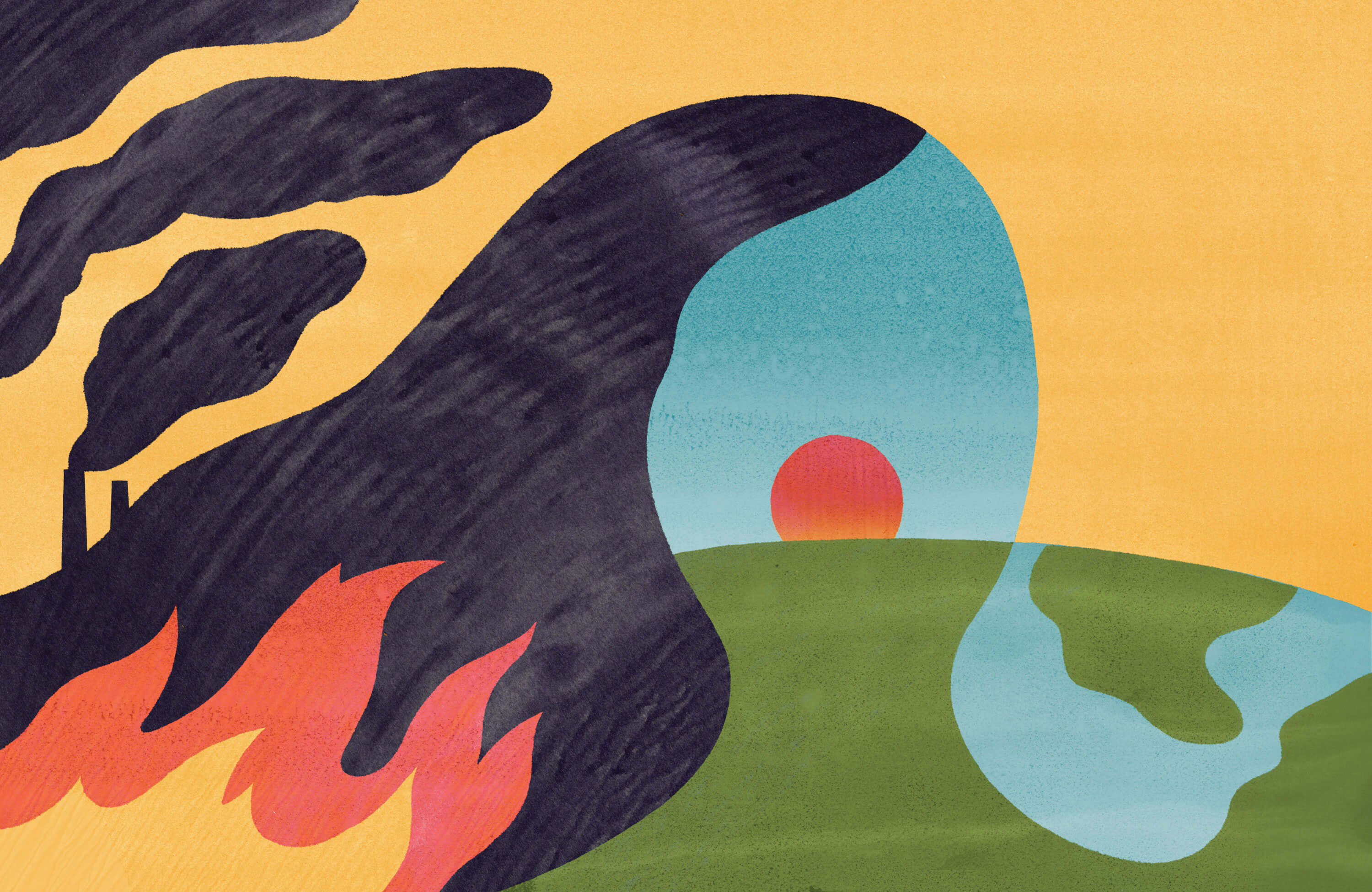
Lay of the Land
Climate change is suffocating our oceans. That’s just the start of our problems say two marine biologists.
As the ocean loses its ability to absorb increasing levels of heat, the Earth as a whole begins to warm, which in turn affects terrestrial plant and animal species.
Similar to the migration of fish, Associate Professor of Biology Pedram Daneshgar says certain plant species have begun migrating. Some are heading to higher elevations, endangering the indigenous species that need a higher altitude to grow. For example, the white-bark pine, North America’s highest elevation tree species, is facing the threat of extinction as other plants are crowding it out of its mountaintop home in search of cooler temperatures. Other plant species are migrating toward the poles, creeping into environments where their growth might previously have been restricted due to the cold and frost. Imagine, says Daneshgar: America’s breadbasket could eventually move north into Canada.
“So, if you’re a happy little herbivore, like a bunny rabbit or a deer, and you’re walking around eating plants, you might have to work harder to eat more to gain the nutrition you would normally get if there was an even distribution of [nutrients] in the leaves,” says Daneshgar.
Warming temperatures due to an increase in carbon dioxide in the air presents another problem for plants and animals. As temperatures warm, growing seasons can potentially extend, giving plants more time to pull in carbon dioxide. That would almost seem to be a positive, since carbon dioxide—along with water and sunlight—is one of the components needed for photosynthesis. But as Daneshgar explains, if the soil is low in key nutrients like phosphorous or nitrogen, and plants are disproportionately gaining carbon, thus causing them to grow quickly, the result is plants that are not as nutritionally dense.
The increased carbon dioxide in the air is connected to more storm and flooding events in New Jersey, meaning more plants are exposed to salt water, which poses another threat, says Daneshgar.
He and his students recently studied eight tree species that were affected by an increase in flooding events and varying levels of salinity. What they found was that as trees were exposed to more salinity, they experienced a decrease in health over time. After one growing season, there was 30% mortality in the eight species studied.
“The forest composition will change, as the trees that are more able to survive this will stick around and everything else will get wiped out,” says Daneshgar. “So the diversity in our forest will decrease. The sad thing if you’re an animal lover is that the trees that seem to be going first are the ones that produce bird-friendly fruits.”
In fact, a recent report released by the National Audubon Society projects that two-thirds of North America’s birds are already threatened with extinction due to climate change factors such as this.

Sean Sterrett, an assistant professor of wildlife ecology, focuses much of his research on reptiles and amphibians. He says the mix of warming temperatures, rising sea levels, increased water salinity, and altered hydroperiods is also beginning to affect ectotherms (cold-blooded animals, including amphibians and reptiles) globally.
“What I mean by altered hydroperiods [is] altered seasons … the springs are potentially going to get earlier, the winters might be nonexistent, the summers may be longer,” says Sterrett. “And things related to temperature, humidity, pressure, wind, precipitation—everything related to keeping an animal cool or warm, dry or moist—are really, really important for ectotherms.”
Since many ectotherms are small-bodied, have limited home ranges, and often require specific temperature and/ or moisture conditions to thrive, it is difficult for the animals to easily and a suitable new home. And certain ectotherms, like diamondback terrapins, a small turtle species native to the New Jersey coast, also have temperature-dependent sex determination, meaning the eggs they lay might be male or female depending on the external temperatures around the egg while the embryo is growing.
While these coastal species may struggle to reproduce due to warming weather conditions, increased water salinity, and flooding events, other more inland populations like woodland salamanders in the Northeast may struggle to adapt due to variations in weather events like seasonal precipitation.
Sterrett says it’s expected that in the winter we will experience more precipitation, but less in the form of snow. This is important because snow acts as a blanket, insulating the soil in winter. Without it, the depth at which the forest floor freezes may increase, and it remains to be seen whether animals like salamanders, who move up and down in soil layers, will be able to adapt and survive.
“Imagine being at home in bed with a big, thick blanket,” Sterrett says. “Now imagine just having a thin sheet … it’s quite possible that freezing soil depth is going to change forests.”
Sterrett, whose students are studying salamander survival rates with an experiment that removes or leaves plots of snow across various areas of the forest floor, says he believes there’s more than enough scientific evidence to show the wide-ranging effects climate change is having across ecosystems globally.
“I do think the science is important and that we continue to understand systems, [but] I’d argue that we have to change people’s values,” says Sterrett. “The value of information is what we should be thinking about, and getting the right types of information to change the values.”
Next, read Part VI of this series: Coping With Change.